Your search for '5'
returned
1,035 results.

|
Ethan Allen and Allen & Wheelock, their Guns and their Legacy by Paul Henry
A comprehensive guide to the firearms of one of America's most important gunmakers Ethan Allen. In this study, Paul Henry illustrates and identifies the whole Allen product line, with special focus upon Allen & Wheelock, showing how features and designs evolved over time. Pepperboxes, barhammer pistols, inline pistols, boot pistols, bar hammer revo
|
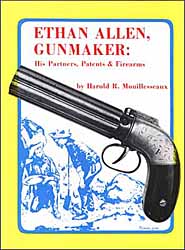
|
Ethan Allen, Gunmaker: His Partners, Patents & Firearms by Harold R. Mouillesseaux
Ethan Allen is considered to be the father of the pepperbox revolver. This important book gives complete details on him, the years during which he worked, the pistol which he perfected and the other arms which he and his companies manufactured. Hard cover, 169 pages, illustrated. The Table of Contents includes the following : Preface Introductio
|
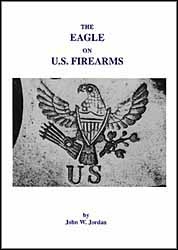
|
The Eagle on U.S. Firearms by John W. Jordan
Stylized eagles have been stamped on government owned or manufactured firearms in the United States since the beginning of our country. It seems that little or no attempt was made to standardize the design of the eagle, hence many different birds appear on the muskets, rifles, and pistols made by government arsenals or private contractors. This boo
|
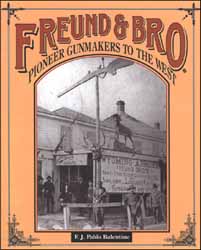
|
Freund & Bro. Pioneer Gunmakers to the West , by F.J. Pablo Balentine
The Freund Brothers, Frank W. and George were skilled German gunsmiths who plied their trade on the Western American frontier during the final three decades of the nineteenth century. Beginning at Nebraska City near the Missouri River -one of the jumping off points for frontier emigrants leaving the "States" - the Freunds followed the sun westward
|

|
French Military Arms and Armor in America 1503-1783 by Rene Chartrand
A comprehensive guide to the military weapons and armor used in New France. Muskets, Swords, Pistols, Bayonets, Polearms and More! From soldiers to sailors to woodsmen and buccaneers, one of Canada's premier historians tells us the story of how they armed during the Colonial Era and in the American Revolution. Soft Cover, 8-1/2 x 11" format, 215 pa
|

|
Firearms, Traps & Tools of the Mountain Men by Carl P. Russell
We recommend this book to any serious buckskinner researching ideas for authentic camp accoutrements. This book is your guide to the guns and gear of the trappers, hunters and fur traders who explored and opened the Old West. Pictures and text describe the early period of 1820 through 1840. Softbound, 448 pages. The Table of Contents includes the
|
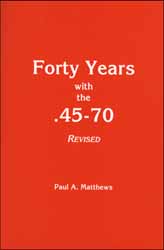
|
Forty Years with the .45-70 Revised Edition by Paul A. Matthews
The authors personal experiences with a number of different .45-70 rifles over the past 4 decades. Soft cover, 184 pages. The Table of Contents includes the following : Acknowledgments Introduction to First Edition Chapter 1 The Seed Is Planted Chapter 2 The Search Chapter 3 The Gould Bullet Chapter 4 The Postell Bullet and a Springfield C
|

|
A Guide to the Ballard Breechloader by George J. Layman
Having earned a reputation as being absolutely reliable from its inception during the early years of the Civil War, the Ballard, much like the Sharps and Remington Rolling Block, departed the 1860's into a new age. Produced by six different manufacturers in an almost 30 year period, it became conspicuous with the settling of the West, a nation wide
|
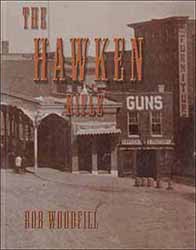
|
The Hawken Rifle, Its Evolution from 1822 - 1870 by Bob Woodfill
A reference on the work of Jacob and Samuel Hawken. This text reveals the many similarities and variances in their pieces as they evolved over time and to meet customer demand. Photos of several famous Hawken rifles are shown, and well as modern interpretations. Valuable material for anyone studying original rifles. Hardbound, 8-1/2 x 11" format, f
|
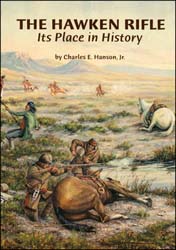
|
THE HAWKEN RIFLE: Its Place in History by Charles E. Hanson, Jr.
Research into the production, management and marketing efforts of the original Hawken Shop. Full length photos, detailed views, and line drawings of several fine original rifles are shown. Documents, letters and tabulations of orders are reproduced to provide a fascinating insight into their operations. 31 illustrations in 104 pages. Softbound edit
|
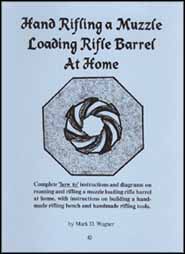
|
Hand Rifling a Muzzle Loading Barrel at Home by Mark Wagner
Cutting spiral grooves inside the barrel is now within the grasp of the serious home craftsman. In eleven chapters, the author explains the theory of rifling and styles of grooves, building a suitable rifling bench, drilling, straightening, reaming, rifling, lapping, and breeching the barrel. Proof testing and safety issues are emphasized. If your
|
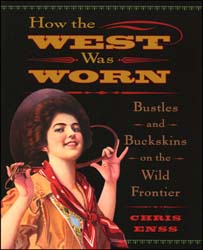
|
How the West Was Worn , Bustles and Buckskins on the Wild Frontier, by Chris Enss
How the West Was Worn examines the sometimes bizarre, often beautiful, and highly inventive clothing of the Old West. You'll learn how a cowboy's home state determined the way he wore his pants and hat, as well as how to distinguish one Indian tribe from another by their moccasins. Meet John B. Stetson, leading maker of cowboy hats; Adah Menken,
|

|
Jim Bridger by J. Cecil Alter
In 1822 Jim Bridger saw a notice in the Missouri Republican that read “The subscriber wishes to engage one hundred young men to ascend the Missouri River to its source, to be employed there." Based on the 1925 biography, a wealth of new facts and corrections are included. Soft bound, 358 pages, illustrations and maps. The Table of Contents include
|
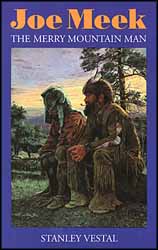
|
Joe Meek, The Merry Mountain Man by Stanley Vestal
A tall man with long black hair, smooth face, dark eyes, full of life and fun, that was how a contemporary described Joe Meek. This famous trapper, pioneer, Indian fighter, peace officer and frontier politician was a lover of practical jokes, Jacksonian democracy, and Indian women. A companion of Kit Carson and Jim Bridger. The Table of Contents i
|
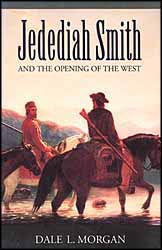
|
Jedediah Smith and the Opening of the West by Dale Morgan
Over 450 pages alive with characters, sketches of Jed Smith, Mountain Men, and the vast hostile land they move over. A reconstruction of a vital and commanding figure. 23 illustrations. The Table of Contents includes the following : Chapter 1 Young Man of Enterprise Chapter 2 The Hunters and the Hunted Chapter 3 The Missouri Legion Chapter 4 S
|

|
The Light 6 pounder Battalion Gun of 1776 by Adrian Caruana
This gun first appeared about 1764 and over the next 12 years was developed into the most versatile of all artillery. The author has given a detailed introduction to the gun, its equipment and its use. He has reproduced specifications of the guns. Drill for all manner of movements and maneuverers and contemporary notes on safe handling. Soft cover,
|
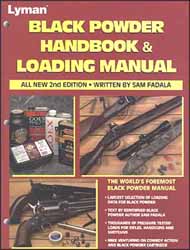
|
Lyman's Black Powder Handbook & Loading Manual, by Sam Fadala
All new Second Edition, with the largest selection of loading data for black powder rifles, pistols, shotguns, and a section on cowboy action and black powder cartridge. Over 20,000 shots were fired and recorded, from rifles, muskets, pistols, revolvers and shotguns. Soft bound volume, in 8-1/2 x 11" format, with 336 pages. The Table of Contents i
|
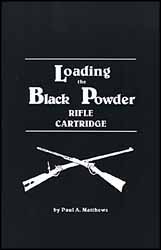
|
Loading the Black Powder Rifle Cartridge by Paul Matthews
Targeted at the shooter who must reload for an obsolete antique black powder caliber, the author discusses cartridge care, lubes, bullet molds, powder charges, and a scheme for developing and testing loads. Soft bound, 122 pages, a valuable data book. The Table of Contents includes the following : Acknowledgments Foreword Chapter 1 A Few Basics
|
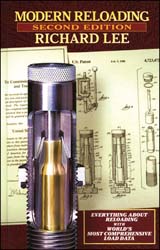
|
Modern Reloading, Second Edition , by Richard Lee
Ammunition reloading for the shooter, hunter, and professional reloader, with detailed loading techniques for quality and quantity production. Extensive information about special methods and tools so anyone can load more accurate ammunition. It covers reloading for rifles, handguns, and shotguns, bullet castings, powder selection and measuring meth
|
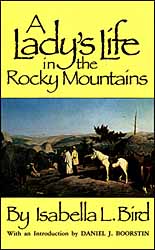
|
Lady's Life in the Rocky Mountains by Isabella L. Bird
A collection of letters, originally written to her sister, they accurately depict the rapidly changing style of life in the Rockies. This trip during 1873 took all of the courage and stamina of this brave English horsewomen, as she toured an area she called “no region for tourists and women". Strong language from a missionary woman who toured the w
|